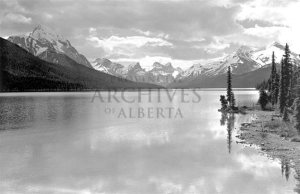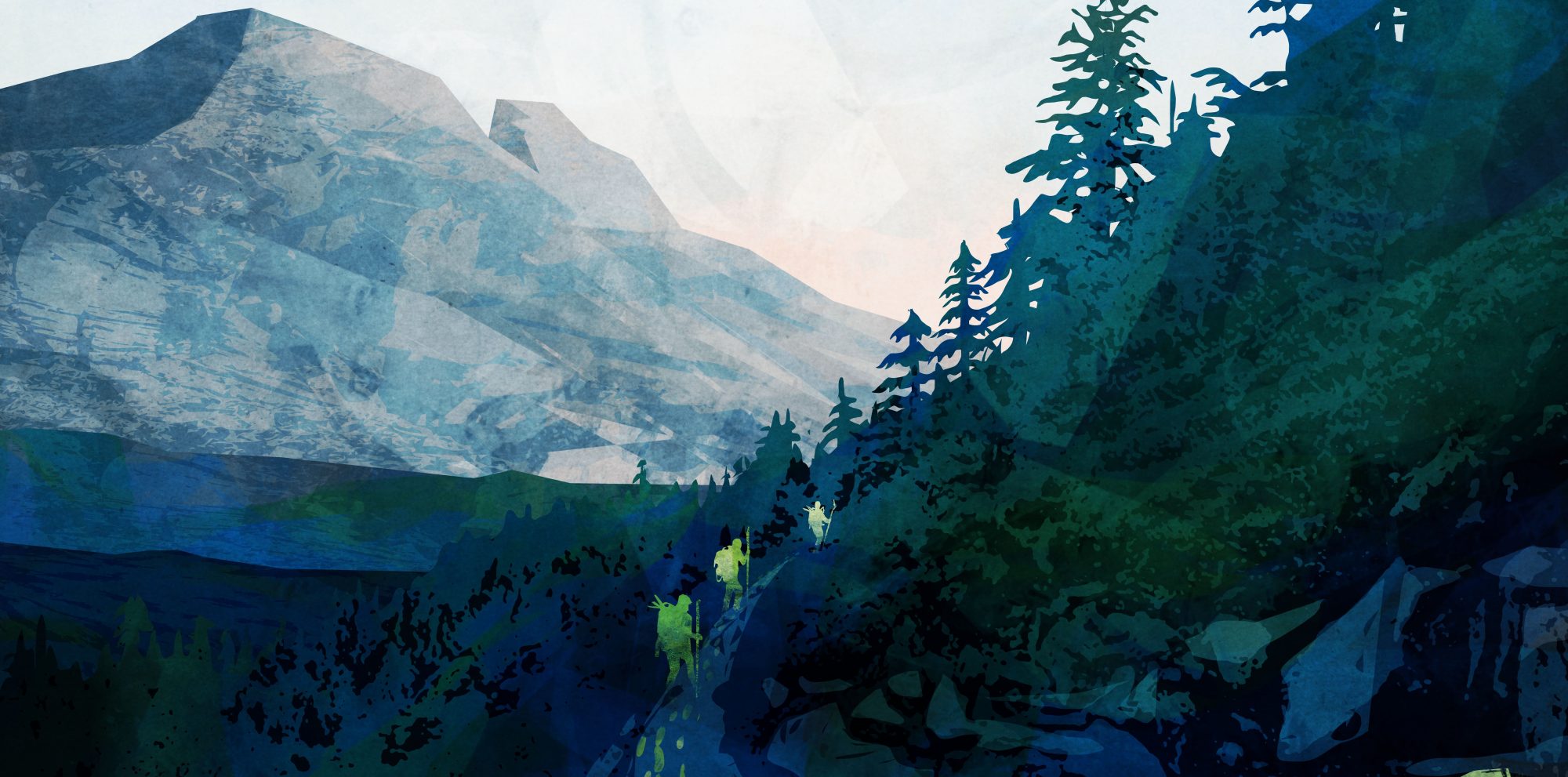Reigning heads of state, their siblings and children have been the inspiration behind many names. In Alberta there are places and features named for Queen Victoria, King Edward VII and Queen Alexandra, Princess Patricia and of course Princess Louise Caroline Alberta.

To have features and places named for these people provides a connection to our historical heads of state and Canada’s ties to the British Empire and the Commonwealth of Nations; but, what of our current head of state?
Queen Elizabeth II became queen upon the death of her father King George VI on February 6, 1952. Over the ensuing days, she received proclamations of allegiance from all of her realms – Canada being the first to do so, beating the United Kingdom by about two hours. However, the celebrations and honours that accompany the crowning of a new monarch did not begin in earnest until her coronation over a year later on June 2, 1953. During the coronation year, honours for the new Queen came from all corners of the Commonwealth. Not surprisingly, Canada offered a grand gesture to mark the occasion. What may not be so well known is that, this honour was proposed by the Province of Alberta in the form of a series of mountain ranges.
The Queen Elizabeth Ranges
The mountains known today as the Queen Elizabeth Ranges are located in Jasper National Park. They almost encircle Maligne Lake, bordering the lake on its east, south and south-west sides. During her 1908 expedition, Mary Schäffer visited Maligne Lake, possibly being the first non-native person to do so. As her party was travelling by raft down the lake, she wrote:
As we were rounding what was supposed to be our debarking point, there burst upon us that which, all in our little company agreed, was the finest view any of us had ever beheld in the Rockies. … those miles and miles of lake, the unnamed peaks rising above us, one following the other, each more beautiful than the last. …we wandered about to drink it all in. How pure and undefiled it was! We searched for some sign that others had been there, – not a tepee-pole, not a charred stick, not even tracks of game; just masses of flowers, the lap-lap of the waters on the shore, the occasional reverberating roar of an avalanche, and our own voices, stilled by a nameless presence.
During her 1908 and 1911 expeditions to Maligne Lake, Mary Schäffer named many of the surrounding mountains, but the mountain groups or ranges were never specifically given a name, although some considered them to be part of the vaguely defined Maligne or Brazeau Range.
 In April 1953, the Geographic Board of Alberta (GBA) received a suggestion from the Alberta Travel Bureau to commemorate the coronation of Queen Elizabeth II. The Bureau proposed that the province “name the entire unnamed range [of mountains] along the eastern side of Medicine Lake and Maligne Lake region the Queen Elizabeth Range.” The Travel Bureau proposed that the range should include Leah Peak, Maligne Mountain, Mount Paul, Mount Warren, Mount Brazeau and Mount Henry MacLeod.
In April 1953, the Geographic Board of Alberta (GBA) received a suggestion from the Alberta Travel Bureau to commemorate the coronation of Queen Elizabeth II. The Bureau proposed that the province “name the entire unnamed range [of mountains] along the eastern side of Medicine Lake and Maligne Lake region the Queen Elizabeth Range.” The Travel Bureau proposed that the range should include Leah Peak, Maligne Mountain, Mount Paul, Mount Warren, Mount Brazeau and Mount Henry MacLeod.
The GBA approved the proposal during its the April 18 and April 22 meetings. In the process it dropped Mount Brazeau from the list, but expanded the demarked area to include the unnamed peaks south east of Beaver Lake as well as Monkhead, Mount Warren, Mount Unwin, Mount Charlton, Llysfran Peak, Mount Mary Vaux, Replica Peak and Coronet Mountain. The support of Premier Ernest Manning was acquired and the proposal was forwarded to Ottawa for consideration, where it received the consent of both the Geographic Board of Canada and the Parks Branch. Finally, after receiving the consent of Buckingham Palace, an announcement was made on June 19 that
Her Majesty had been pleased to approve a proposal that mountains which practically encircle beautiful Maligne Lake, one of the most photographed bodies of water in the Rockies, be named the “Queen Elizabeth Ranges”…these ranges tower ten thousand feet or more into the cloud flecked heavens and the whole scene makes one of the most perfect pictures of Alpine grandeur – bold rocky forms, ice and snow gleaming against a blue sky, dark forests and a sapphire blue lake – a fitting memorial to the Queen.
Queen Elizabeth Provincial Park, Lac Cardinal
Even after naming a series of mountains in honour of Queen Elizabeth II, Alberta was not yet done; just over twenty years later, Alberta honoured the Queen with a provincial park.
In 1958, the Government of Alberta established Lac Cardinal Provincial Park. The park was located just west of Grimshaw on the shores of Lake Cardinal, from which it took its name. In 1912, Lake Cardinal, formerly known as “Bear Lake,” was named for Louis Cardinal, an early settler in the region.
In 1978, Edmonton hosted the Commonwealth Games. Part of the games’ festivities was a Royal Tour of Canada by the Queen and Prince Philip, along with their sons Prince Andrew and Prince Edward. The Royal family visited Grande Prairie and the Peace Country, including a stop at Lac Cardinal Provincial Park to meet Chief Chonkolay-Colo, who presented the Queen with gifts from his tribe. On August 1, 1978, the Government of Alberta renamed the park as Queen Elizabeth Provincial Park, Lac Cardinal in honour of her visit. Information and maps of Queen Elizabeth Provincial park, Lac Cardinal can be found on the website of Tourism, Parks and Recreation.
Mount Queen Elizabeth?
Interestingly, there is a mountain on the Alberta/British Columbia boundary west of Turner Valley named Mount Queen Elizabeth. Many people believe that it is also named for our current Queen. In actuality, it is not. This mountain was named in 1916 by the Interprovincial Boundary Commission. It commemorates Elisabeth, Duchess of Bavaria and Queen of the Belgians (and yes, the Boundary Commission got the spelling wrong).
A nearby mountain is named for Elisabeth’s husband, King Albert I of Belgium. These names were bestowed to commemorate Albert’s role as commander of the Belgian Army during the First World War and Elisabeth’s visits to the front lines to boost troop morale. Both names were officially adopted for mapping purposes in 1918.
Written by: Ron Kelland, Historic Places Research Officer and Geographical Names Program Coordinator
For location information and a list of additional resources: Read more

